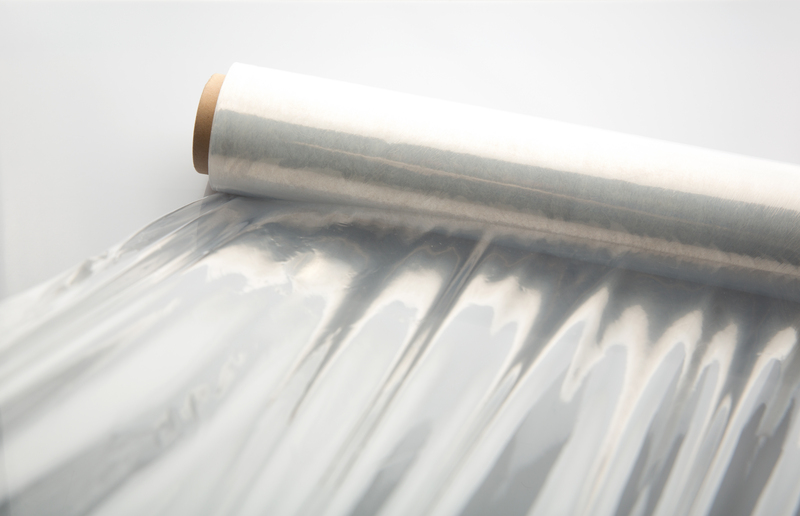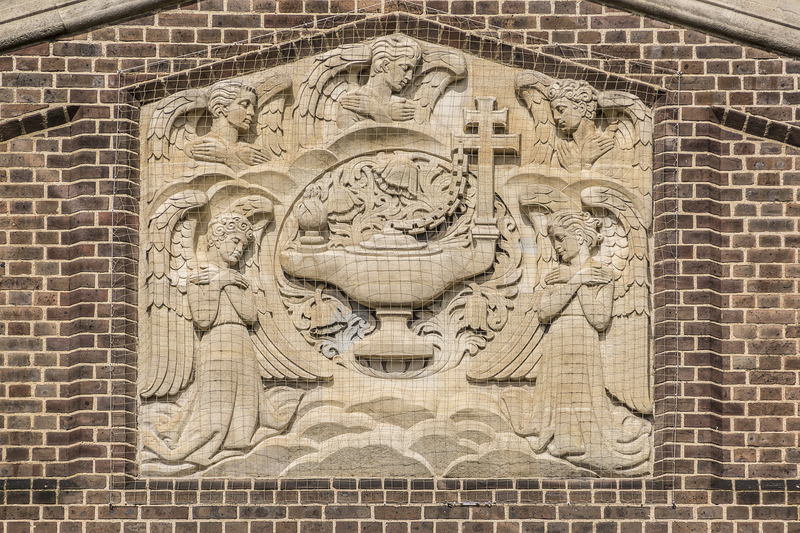The Ultimate Cheat Sheet for Cleaning uPVC Window Frames
Posted on 15/06/2025
The Ultimate Cheat Sheet for Cleaning uPVC Window Frames
Keeping your uPVC window frames looking pristine not only improves the aesthetics of your home but also extends their lifespan. uPVC (unplasticized polyvinyl chloride) is a durable, low-maintenance material, but over time it can get dirty and suffer from grime build-up, discoloration, and even damage when neglected. In this all-encompassing guide, you'll discover the best practices, top cleaning hacks, and expert-recommended products for cleaning uPVC window frames. Whether you want to restore old uPVC or keep brand-new frames in tip-top condition, this cheat sheet covers everything you need for professional results.
Why Is Regular Cleaning of uPVC Window Frames So Important?
- Maintains Appearance: Clean frames enhance your home's curb appeal.
- Prevents Staining: Regular cleaning helps prevent stubborn mold, algae, and dirt stains.
- Improves Longevity: Removing damaging contaminants preserves the integrity of the material.
- Enhances Function: Debris-free frames ensure windows open and close smoothly.
- Boosts Energy Efficiency: Clean seals and frames limit drafts and heat loss.
Pro Tip: For best results, schedule a thorough clean of your uPVC frames at least twice a year. More frequent spot cleaning in high-pollution or coastal areas can prevent discoloration and hardware corrosion.

What You'll Need to Clean uPVC Window Frames Effectively
- Mild detergent or specialist uPVC cleaner
- Warm water
- Soft cloths or microfiber cloths
- Non-abrasive sponge
- Old toothbrush or soft-bristle brush
- Spray bottle (optional)
- Vacuum with soft brush attachment (for vents and seals)
- White vinegar or baking soda for tough stains
- Gloves to protect hands
Avoid: Never use abrasive pads, steel wool, or solvent-based cleaners (like nail polish remover or undiluted bleach), as these may permanently scratch or discolor the uPVC surface.
Step-by-Step Guide to Cleaning uPVC Window Frames
Step 1: Remove Loose Dirt & Dust
Begin by removing loose grime and dust. Use a vacuum with a soft brush attachment to gently clean around the frame, paying attention to vents, crevices, and hinges where dirt collects. This prevents scratching the uPVC during wet cleaning.
Step 2: Prepare Your Cleaning Solution
Mix a gentle cleaning solution: Combine a few drops of mild dish soap with warm water in a bucket or spray bottle. For deeper cleaning, dilute white vinegar (1 part vinegar to 4 parts water) for natural disinfecting power and to help dissolve stubborn buildup.
Step 3: Wipe Down the Frame
- Dip a soft cloth or sponge into your cleaning solution and wring out excess water.
- Gently wipe along the surface of the uPVC frame, working from the top down.
- For corners and tight areas, use an old toothbrush or cotton bud.
- Rinse the cloth frequently to avoid redistributing grime.
Step 4: Treat Tough Stains & Discoloration
Some stains - like markers, bird droppings, or ingrained dirt - need extra attention:
- Baking Soda Paste: Mix baking soda with a little water to create a paste. Rub it gently onto stains with a soft cloth, leave for 10 minutes, then wipe clean.
- White Vinegar: Spray diluted vinegar on the stain, wait a few minutes, then scrub with a brush.
- Commercial uPVC Restorer: For yellowing or stubborn stains, apply a reputable uPVC cleaning product following the manufacturer's guidelines.
Warning: Never use abrasive powders or scouring pads, as these will dull the glossy finish of your uPVC and cause irreversible damage.
Step 5: Rinse & Dry Thoroughly
- Wipe frames with a clean, damp cloth to remove any residue from soaps or cleaning products.
- Dry the frame completely with a fresh microfiber cloth to prevent water spots and keep streaks at bay.
Step 6: Polish (Optional, But Recommended!)
For an extra layer of shine and protection, apply a specialist uPVC polish or restorer. Not only will this bring out a brilliant white finish, but it will also provide a protective barrier against dust, pollutants, and UV rays.
How to Clean Inside the uPVC Window Frames
Dirt often finds its way inside the frames, tracks, and hidden corners. To clean these interior areas:
- Open the window fully for easy access.
- Vacuum along tracks and seal areas to remove loose debris.
- Wipe with a damp cloth dipped in the cleaning solution. For black mold or mildew, use a vinegar solution or a mild diluted bleach (1:10 ratio), but rinse thoroughly.
- Dry with a clean towel to prevent mold re-growth.
Expert Tips for Long-Term Care of uPVC Frames
- Lubricate hinges, handles, and locks with a silicone spray for smooth operation.
- Inspect seals and weatherstrips for damage; replace if worn out to maintain energy efficiency.
- Avoid placing sticky tape or adhesives on the frames, which can leave marks or pull the surface coating away.
- Regularly check for mold or mildew, especially around damp areas. Early treatment is easier and more effective.
Common Mistakes to Avoid When Cleaning uPVC Window Frames
- Using harsh or undiluted chemicals: Bleach, solvents, and spirit-based cleaners can cause discoloration and brittle frames.
- Employing abrasive tools: Steel wool, scouring pads, or gritty powders can scratch and permanently damage the smooth uPVC surface.
- Neglecting crevices and seals: Dirt build-up here leads to operational faults and water leaks.
- Skipping regular cleaning: Once grime builds up, restoring the surface becomes much harder.
How to Remove Yellowing on uPVC Window Frames
Over time, uPVC frames may develop yellowing, especially on older installations exposed to direct sunlight and pollution. Here's how to restore their original whiteness:
- uPVC Cream Cleaners: These are specifically designed to treat discoloration on uPVC. Follow instructions carefully and test on a hidden area first.
- Baking Soda Paste: Scrub with a soft cloth and baking soda paste as described earlier.
- Specialist Restorers: Some commercial products can renew faded or yellowed uPVC. Look for non-abrasive, bleach-free formulas for best results.
Note: If yellowing persists even after treatment, consult a professional--replacement or refurbishment may be necessary for severely aged frames.
Natural Cleaning Alternatives for uPVC Window Frames
For those who prefer eco-friendly cleaning solutions, here are some powerful yet gentle alternatives:
- White Vinegar: Great for dissolving mineral deposits and light mold.
- Baking Soda: Acts as a gentle abrasive for tougher stains without scratching.
- Lemon Juice: Natural deodorizer that can help fade stains thanks to its mild acidity.
Tip: Always rinse well after using natural cleaners to prevent sticky residue or lingering odors.

Frequently Asked Questions About Cleaning uPVC Window Frames
How Often Should I Clean My uPVC Window Frames?
Ideally, you should perform a deep clean every six months, with spot cleans as needed in between--especially in areas exposed to heavy pollution, pollen, or coastal salt spray.
Can I Use Bleach on My uPVC Window Frames?
Pure bleach should NOT be used, as it can discolor and damage uPVC. If you must use a disinfectant (for mold or mildew), dilute it heavily (1 part bleach to 10 parts water) and rinse thoroughly.
Will Pressure Washing Damage uPVC Frames?
Avoid using full-power pressure washers. The intense pressure can crack seals and force water into the frame, leading to leaks or damage. A gentle garden hose rinse is safe.
Are Baby Wipes Good for Cleaning uPVC?
Some non-alcohol, fragrance-free baby wipes can be safe for quick touch-ups. However, for regular cleaning or serious stains, use proper uPVC cleaners or mild soapy water to protect the surface.
Conclusion: Keep Your uPVC Looking Like New
Well-maintained uPVC window frames not only enhance your home's appearance but also maximize investment longevity and energy efficiency. Armed with this comprehensive cheat sheet, you have all the tips, products, and step-by-step strategies needed for sparkling clean uPVC frames every season.
- Clean regularly to avoid tough stains.
- Use only soft, non-abrasive tools and mild cleaning agents.
- Spot-treat mold, mildew, and yellowing as soon as they appear.
- Finish with a uPVC polish for extra protection and shine.
Start using these professional cleaning techniques today and keep your uPVC window frames looking brand new for years to come!




